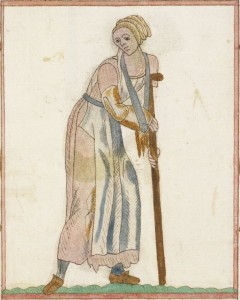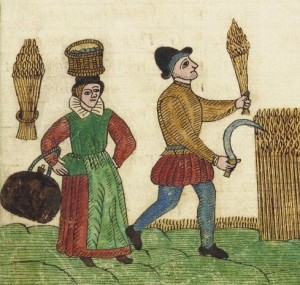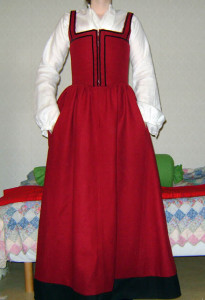Clothing the Elizabethan Poor
There’s not much available on what the penniless wore in the 16th century. They had hardly anything of value and rarely showed up in pictures of any kind.
Fortunately, there are some sources available. I’ve just put one of them online:
Excerpts from the account books of the Tooley Foundation: Poor Relief in Ipswitch, 1580s-1590s
Ipswitch was lucky to have a generous and civic minded merchant, Henry Tooley, donate his substantial estate to helping the poor of the town when he died. The Tooley foundation maintained hospitals and poorhouses, worked to employ the poor, housed, fed and clothed those with nowhere else to go, and–most admirably of all–kept precisely detailed accounts of what they spent all of their money on.
The records date from the 1580s and 1590s. A variety of clothing items were bought and made for men, women and children at the various houses and hospitals.
Women received the following items, paid for by the Tooley foundation: petticoats, waistcoats, frocks (aka gowns), smocks, shoes, knit hose, aprons, coifs, kerchiefs,leather shoes and neckerchiefs. Men received shirts, doublets and hose, jerkins, ruff bands, knit hose, long coats and leather shoes.
A woman would receive either a “peticote and a wastcote” or “one frocke”, but not both; and for the men, they almost always received “one jerkine and i payre of bryches”, or “one cote”, with doublets mentioned only once. Which raises the interesting possibility that, in this case, a jerkin was either a) a synonym for doublet, or b) worn directly over the shirt.
The fabrics used for these items were cheap and practical. (more…)


